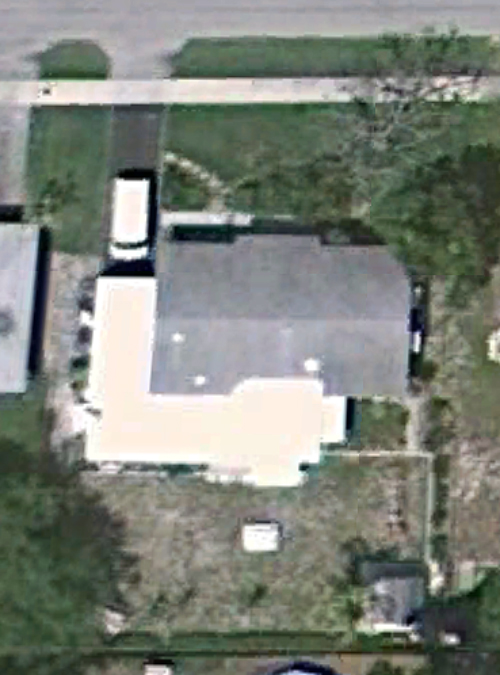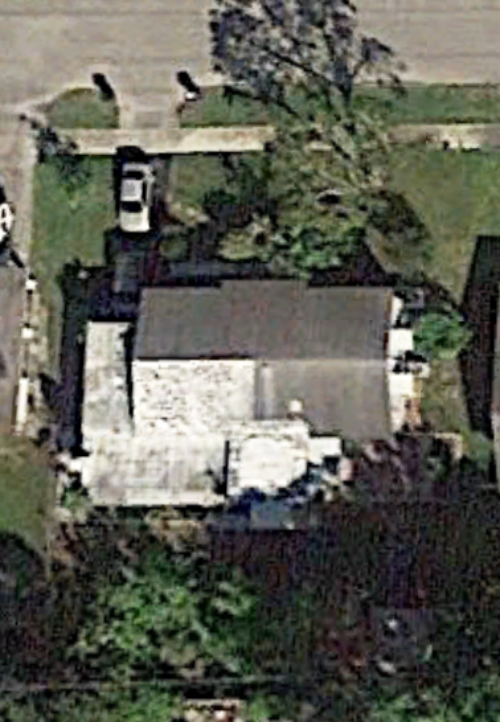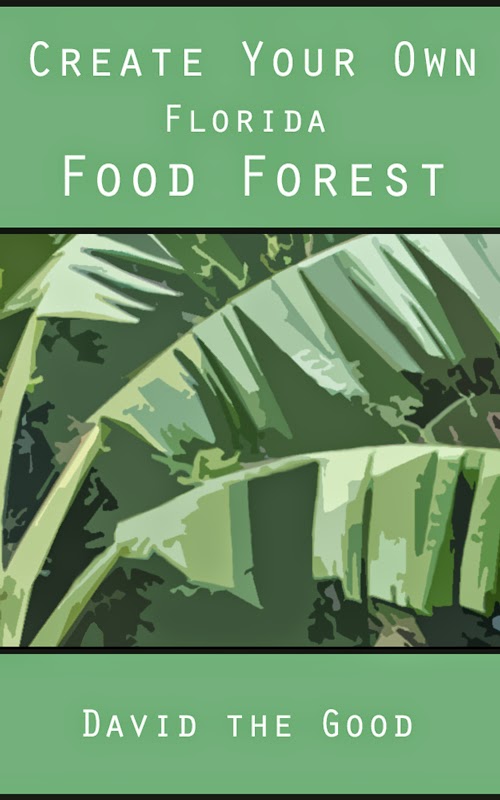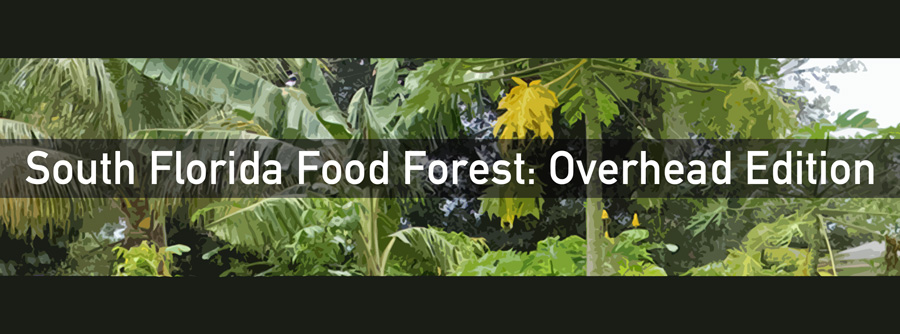Yesterday I posted on my North Florida food forest and shared a pair of overhead images from Google Earth from 4 years apart. Today let’s do the same thing with the urban food forest in Ft. Lauderdale I’ve dubbed The Great South Florida Food Forest Project.
First, here’s a shot from 2011

2011
That’s a blank little backyard, isn’t it? So sad! There’s a little mango tree in the middle behind the white square of the swing. There’s also a coconut palm to the left of the shed on the bottom right, but overall… there’s not much going on.
Now let’s take a look at the most recent overhead image:

2015
Hey – that’s more like it!
In the top right of the image you can see a young tamarind tree to the left of the white vehicle in the driveway. On the right side of the house is the nice big tropical almond tree.
And in the backyard? A big mass of green life! I wish the resolution was a bit better, but you get the idea. There are a lot of fruit trees, shrubs, vines, flowers and roots growing in that second photo – and we’ve done this in probably about 6-8 weekends worth of work, tops. With South Florida’s good rainfall and tropical climate, plus its root-accessible water table, once your food forest is planted and watered in well for the first few months, it takes on a lush life of its own.
Papaya, grumichama, key lime, mulberry, mango, coconut, plantain, banana, chocolate pudding fruit, cashew, starfruit… it’s beautiful and productive. The starfruit alone yields at least 100lbs of fruit a year!
This entire yard is probably about .15 acres. It’s little – but food forests can be scaled according to what you have available. I plan to plant a tiny patio-sized one when we get a new location, just so I can show off what you can do with a small space permaculture garden.
Here’s the most recent tour video I recorded on this little postage stamp-sized property in the city:
I’m quite happy, especially considering how little we worked this food forest. The system works.
 As I’ve written before, I like to test things out thoroughly before I write about them. The five years I spent on these two food forest projects in Florida, separated by five hours drive in totally different climates with very different soils, provided me with the raw data I needed to write Create Your Own Florida Food Forest.
As I’ve written before, I like to test things out thoroughly before I write about them. The five years I spent on these two food forest projects in Florida, separated by five hours drive in totally different climates with very different soils, provided me with the raw data I needed to write Create Your Own Florida Food Forest.
My new homestead, once I nail one down, will be the testing ground for a while new range of plants… and, of course, I’ll be sharing that journey with you.
I wish I knew how many food forests have been planted thanks to people stopping by my site or reading my books.
I know of at least a half-dozen I’ve directly inspired and I’ll bet there are a lot more. It’s hard to express how blessed I feel to know that there are gardeners getting excited about growing their own food by following the design sketched across nature.
Check out this review, for instance:

Alright! I love it.
Keep on growing, folks. And thank you. You keep me going.



4 comments
Question,I grow many of my plants in grow boxes which I really like,however mosquitoes like the bottom where the water is.What can I put in the bottom to take care of them,but not effect the plant?
These things work really well: http://amzn.to/20jFVB1
I’ve used them in my water chestnut ponds before and they’re safe.
Thanks for paying attention to those of us in So. Fla. Fun to see what others are having success with. Wonder if you can espalier any of those trees like acerola cherry or carambola? Re: the fig . . . Had to dig mine out of the ground and put it in a pot but was able to revive it with multiple applications of seaweed, compost, rosemary/oregano purée, orange peels, fish emulsion and a thick layer of mulch. (I hate to give up on any plant. Can you tell?) It did produce figs last year, in small quantity. It is actually producing one right now!
I’m sure you could espalier the heck out of them.
Good work with the fig. They really hate the hot, sandy nematode-riddled soil down south.
Comments are closed.